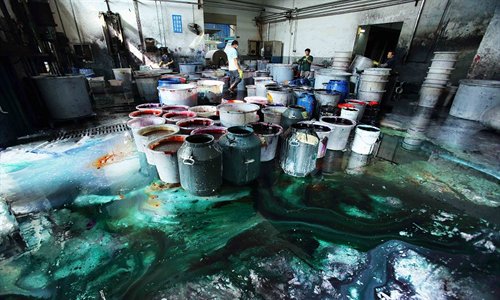Greenpeace report exposes large-scale toxic pollution in Zhejiang

A non-governmental environmental organization Tuesday exposed dumping of industrial wastewater containing a wide range of hazardous substances from China's most important textile manufacturing clusters in Zhejiang Province.
The report, published by Greenpeace International, pointed out that local textile facilities, some of which produce textiles for major brands including Levi's, Calvin Klein and GAP, are exploiting complex wastewater systems to hide scrutiny of their production processes.
The report further stated that the water samples taken near the pipe mouths of China's biggest communal wastewater treatment plants (WWTP) in coastal Zhejiang Province contained toxic chemicals that could damage the human reproductive system and lead to diseases such as cancer.
"The samples of wastewater taken on site have proven to be some of the most toxic testing results we have seen throughout our campaigning," said Li Yifang, a toxics campaigner at Greenpeace East Asia.
Jin Guorong, environmental protection bureau chief of the industrial zone, told the Global Times that through their efforts, the water emitted from the zone is safe.
Some of these chemicals are even persistent and bio-accumulative, Li said. Many of them come from nearby Shaoxing county, which is home to more than 9,000 textile mills and provides one-third of China's dyed fabric.
"Many international brands, such as Levi's, source their products from facilities within such industrial zones, yet identifying whether individual suppliers are responsible is almost impossible," said Li.